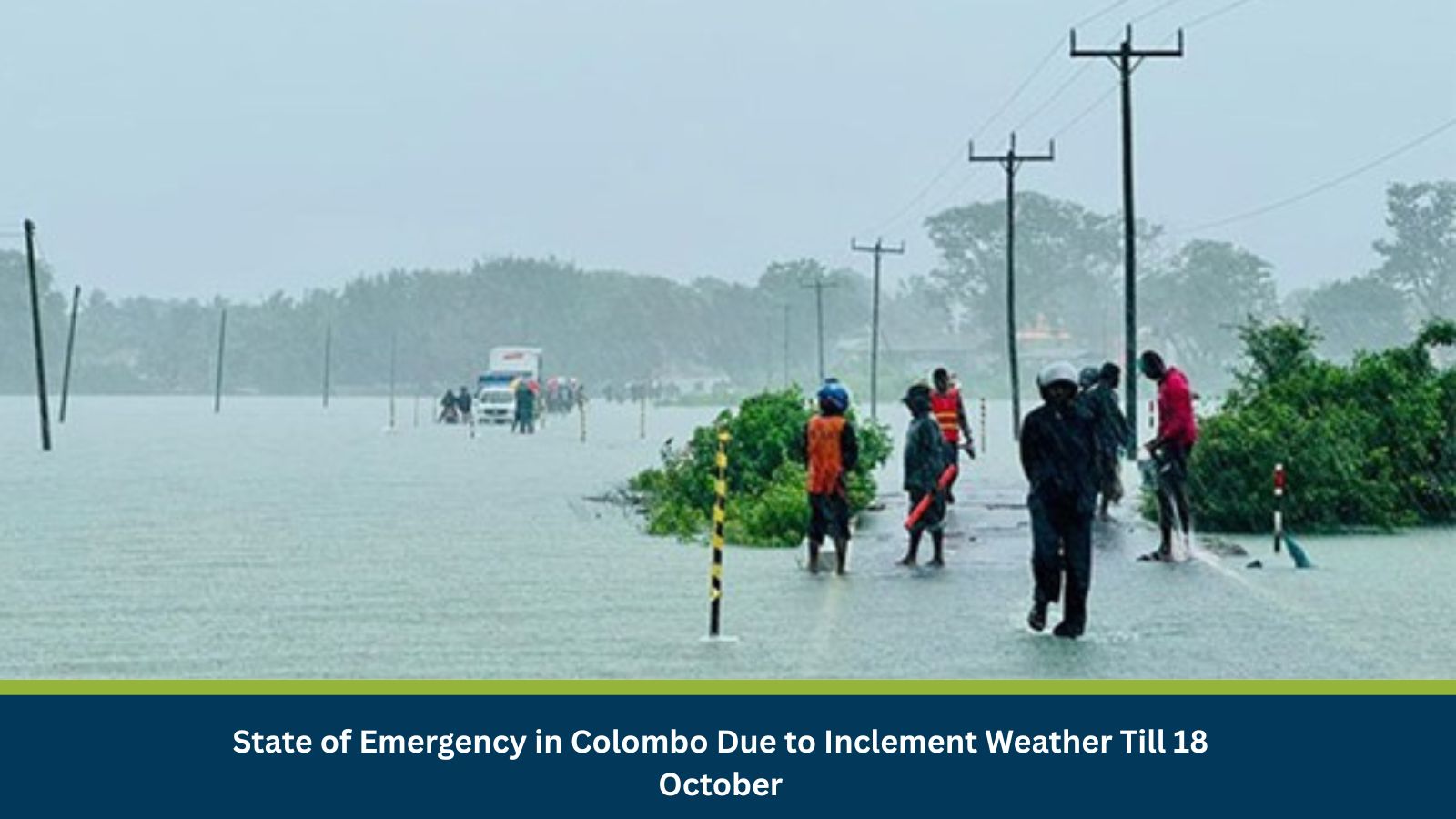What is Risk Analysis in the Context of Environmental Events
Environmental risk analysis evaluates how severe weather such as monsoon rains, floods, or cyclones impacts safety, infrastructure, and operational continuity. In Colombo, the combination of high population density, aging drainage systems, and coastal topography makes the city highly vulnerable to heavy rainfall. Historical events show that even short-duration downpours often lead to extensive flooding, traffic paralysis, and service outages, making environmental monitoring and preparedness essential for organizations operating in Sri Lanka’s urban centers.
Executive Summary
- Date of Incident: 17 October 2025
- Location: Colombo, Sri Lanka
- Risk Category: Environment
- Severity Score: 4/5
- Confidence Level: 90%
A state of emergency has been declared in Colombo following forecasts of heavy rain and severe winds until 18 October 2025. Authorities have pre-emptively activated disaster management protocols to mitigate potential flooding and infrastructure damage. Based on prior weather emergencies in Colombo where flooding affected over 20 city locations and power supply failures were frequent significant disruption is expected across transportation, utilities, and business operations. The risk trajectory suggests high short-term impact with potential residual recovery delays over the next three to five days.
Current Updates
The Colombo City Council and Disaster Management Centre (DMC) have deployed emergency response teams and issued public advisories urging residents to avoid flood-prone areas. Drainage systems in several neighborhoods, including Wellawatte, Kolonnawa, and Pettah, have already shown early signs of overflow. Heavy rain warnings remain in effect for the Western and Sabaragamuwa provinces.
Known Hotspots and Sensitive Areas
- High Impact: Galle Road (Kollupitiya–Wellawatte), Baseline Road, and Marine Drive — historically prone to deep flooding and traffic paralysis.
- Medium Impact: Fort–Pettah commercial hub, Port of Colombo access roads, and Nugegoda.
- Low Impact: Elevated zones such as Cinnamon Gardens, though still affected by mobility delays.
Recurrence risk remains high through the monsoon season, particularly during consecutive days of rainfall.
Impact on Transportation and Services
Urban flooding has led to severe traffic congestion, road closures, and possible delays in public bus and train operations. Access to Bandaranaike International Airport (CMB) may face intermittent blockage due to inundated expressway links. Power and telecommunication outages are anticipated, especially in coastal and low-lying districts. Businesses may experience reduced staff attendance, logistics delays, and service interruptions across Colombo’s central commercial districts.
Recommended Actions
- Employee Safety & Mobility: Activate remote work for non-essential staff; monitor local advisories; restrict travel through known flood corridors.
- Asset Protection: Secure and elevate critical assets; verify generator readiness and data backups; unplug sensitive electronics in flood zones.
- Continuity Operations: Implement business continuity plans; use alternate locations or full remote operations; maintain open communication with clients.
- Situational Awareness: Establish an internal Incident Management Team (IMT); track DMC and Meteorology Department bulletins; disseminate real-time safety updates to employees and stakeholders.
Multidimensional Impact
Citywide flooding can disrupt emergency services, delay logistics chains, and impair access to essential medical and transport infrastructure. Waste overflow and contaminated floodwater increase health risks, potentially escalating humanitarian challenges. While rainfall is expected to taper by 18 October, post-event clean-up and utility restoration may prolong partial disruptions through the following week.
Emergency Contacts
- Police: 119
- Fire: 110
- Ambulance: 1990
- Disaster Management Centre (DMC): +94 11 213 6136
- Meteorology Department: www.meteo.gov.lk
Final Thoughts
The trajectory indicates a high-severity, short-duration weather emergency, likely stabilizing by Saturday (18 October). Key watchpoints include extended rainfall into next week, prolonged power restoration timelines, and logistical bottlenecks at critical routes like Galle Road and Port Access Road. Stay ahead of operational risks with real-time alerts, scenario modeling, and expert advisories with datasurfr’s Predict. Start your 14-day free trial of Datasurfr’s Risk Intelligence Platform today.






